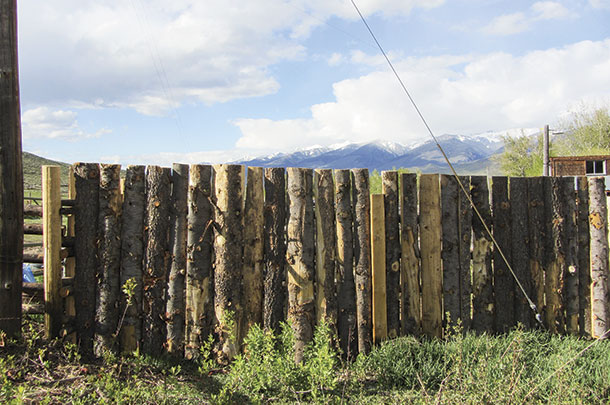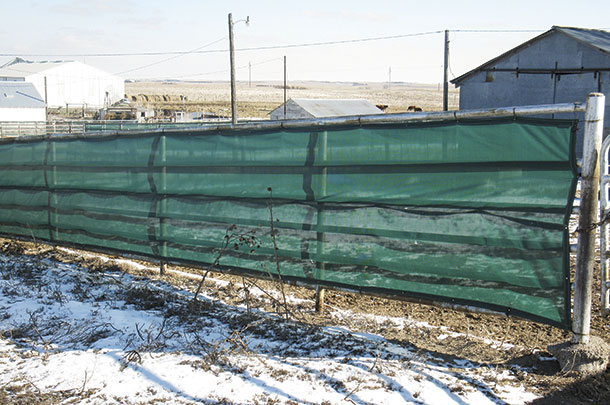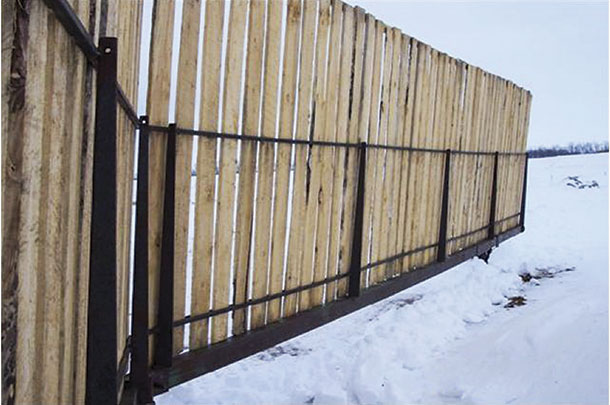Windbreaks/shelter are important for calving cows and young calves.
Dr. Joseph Darrington, ag engineer, South Dakota State University, says natural shelter or planted shelterbelts are helpful, but most trees don’t have much foliage in the winter/spring to stop wind. If you plant a shelterbelt, use two rows of tall trees and two rows of smaller trees. For the most protection, include evergreens.
Wetness accentuates wind chill. Dry winter hair is good insulation against the cold, standing up fluffy with air spaces between the hairs. “When hair is wet and flattens down, it changes the cow’s thermal-neutral zone. Wet winter hair has the same insulation capacity as summer hair,” says Darrington.
“One of the reasons we lost so many animals in the Atlas storm (early October 2013) was that it rained first and then got cold. Hair was wet, and cattle were unable to stay warm. It didn’t get terribly cold – just cold enough they couldn’t maintain body heat without that insulation.” They were chilled too much too long.
“If cattle hadn’t gotten wet just before temperatures dropped, they would have been able to handle it. If they have access to trees, to get out of the rain, it may be adequate – if the foliage is still there.”
Constructed windbreaks are generally made with vertical boards, leaving spaces between them. “Target porosity is from 20 percent porosity (open) and 80 percent solid down to 65 or 70 percent solid.

If you have more than 35 percent porosity (65 percent solid) or closer to 50-50, you lose some benefits of a windbreak; there’s more air velocity coming through rather than being pushed up and over,” explains Darrington.
You don’t want a solid windbreak because it reduces wind speed right next to the windbreak, and snow will dump right behind the windbreak. This reduces the protected area for cattle to bed or stand behind it. It’s better to have a porous windbreak so you don’t end up with a big snowdrift behind it, reducing the shelter area.
“With 30 percent open and 70 percent solid, the protected zone behind a windbreak extends 10 to 20 times the height of the windbreak. The protected area is estimated based on the height. For instance, a 10-foot-tall fence slows the wind for about 100 to 150 feet behind it. If it’s a straight windbreak, and the wind is coming head on, this creates a triangular protected zone behind it,” Darrington says.
Steve Paisley, extension beef cattle specialist, University of Wyoming, says there are many ways to create windbreaks. “Fabric windbreaks can be purchased and attached to a frame with zip-ties or laced to existing fence. This is a short-term fix that works fairly well, and these temporary windbreaks last several years depending on how well they are attached,” he says.

“The main problem with these is lack of porosity. Solid structures only give protection immediately behind them. The research on porosity was done in the 1970s and 1980s by Bob Jairell, a Wyoming hydrologist who developed a lot of snow fences, and his data is still used today,” says Paisley.
Permanent structures are sometimes put in the wrong spot. “The snow dump is a ways behind the windbreak and may be in a place you don’t want it,” he explains. Do some homework before creating windbreaks to make sure they work properly.
Paisley’s concern regarding windbreaks in the intermountain West is: They need to be designed for both wind protection and snow management.

Every ranch is a little different in natural terrain and wind direction. Air currents vary depending on whether you’re in a valley, on the plains or a mountain. Windbreaks should usually face prevailing wind direction. If wind may come from several directions, you might want a curved windbreak.
“In our region, the coldest wind comes from the northwest, most of the time,” says Darrington. “Best position for a windbreak here is to run it from southeast to northwest, perpendicular to the prevailing wind. If ranchers want a larger protected area, they sometimes run another windbreak from northwest to southeast, creating an arrowhead shape pointing to north. This gives the greatest protection,” he explains. ![]()
PHOTO 1: Old belting makes a solid windbreak, which can be useful in corrals or areas where cattle are being worked, and it lasts a long time. Photo provided by Dr. Steve Paisley.
PHOTO 2: Tall vertical boards with spaces between them make a very effective windbreak. Photo by Heather Smith Thomas.
PHOTO 3: Fabric windbreaks can be purchased and fastened to panels or fences. Photo provided by Dr. Steve Paisley.
PHOTO 4: Portable windbreaks can be very beneficial if you are rotating pastures and moving the windbreaks with the cattle. Photo provided by Lorne Klein.
Heather Smith Thomas is a freelance writer based in Salmon, Idaho. Email Heather Smith Thomas.
Calf shelters
Some ranchers create shelters for baby calves so they can stay dry as well as out of the wind. “According to USDA studies, a young calf’s thermal-neutral zone (where it is comfortable and can do well) is 50 to 68ºF. They also do fine below that temperature if they are dry and out of the wind,” Darrington says.
“As long as cows are producing plenty of milk, calves can handle very cold temperatures. They just consume more milk – to create heat energy to keep warm. The trade-off in cold weather (below the lower critical temperature of their thermal-neutral zone) is:
The extra milk consumed goes for maintenance/body heat rather than gain,” he says. One benefit of providing shelter is: Cows and calves won’t need as much extra food just to keep warm, and calves grow more.
A three-sided shed works well, with opening facing south – away from cold winds. This also allows morning sun in those calf houses. For baby calves, make sure shelters stay clean to avoid contamination from scours; shelters should be on skids and portable. Then you can move them to clean ground and put in fresh bedding.
“Provide enough sheds for the group – 12 to 15 square feet per calf – and move as needed. It may seem strange to give baby calves more space for their size than for confined finishing beef animals, but with scours being a problem in calves, it pays to give them as much space and clean bedding as is economical,” says Darrington.
Constructing windbreaks
A tall windbreak needs posts set deeply to hold it or build it on skids for portability. “Some producers make solid windbreaks with vertical metal roofing,” says Darrington. “A 30-inch-wide piece of roofing metal is enough space for calves to nestle right against it and be completely protected. You need a fairly big gap between pieces, however, to create adequate porosity so snow won’t collect behind it.
For cows, this type of windbreak may be a little less effective because air speed coming through the larger cracks may chill them if they are right next to it, but farther back there is decreased velocity of air. Calves, however, can be next to those 30-inch sections, so you might get the benefits of both (solid windbreak plus some porosity).
These are fast to build, with fewer total pieces. Ideal spacing for 30-inch pieces of roofing metal would be 5- or 6-inch gaps or about 36 inches on center,” he explains.
Portable windbreaks are handy when rotating pastures or strip-grazing fall and winter pastures, moving the windbreaks when cattle are moved. “Make the base heavy enough and wide enough they don’t tip over in the wind, or stake them down with 2-foot lengths of rebar or T-posts,” he says.
Make these windbreaks in sections so they can be moved with a tractor – pulled around or picked up with a loader. If you have to take them very far, you could lift them onto a flatbed truck, strapping them down securely for hauling.









